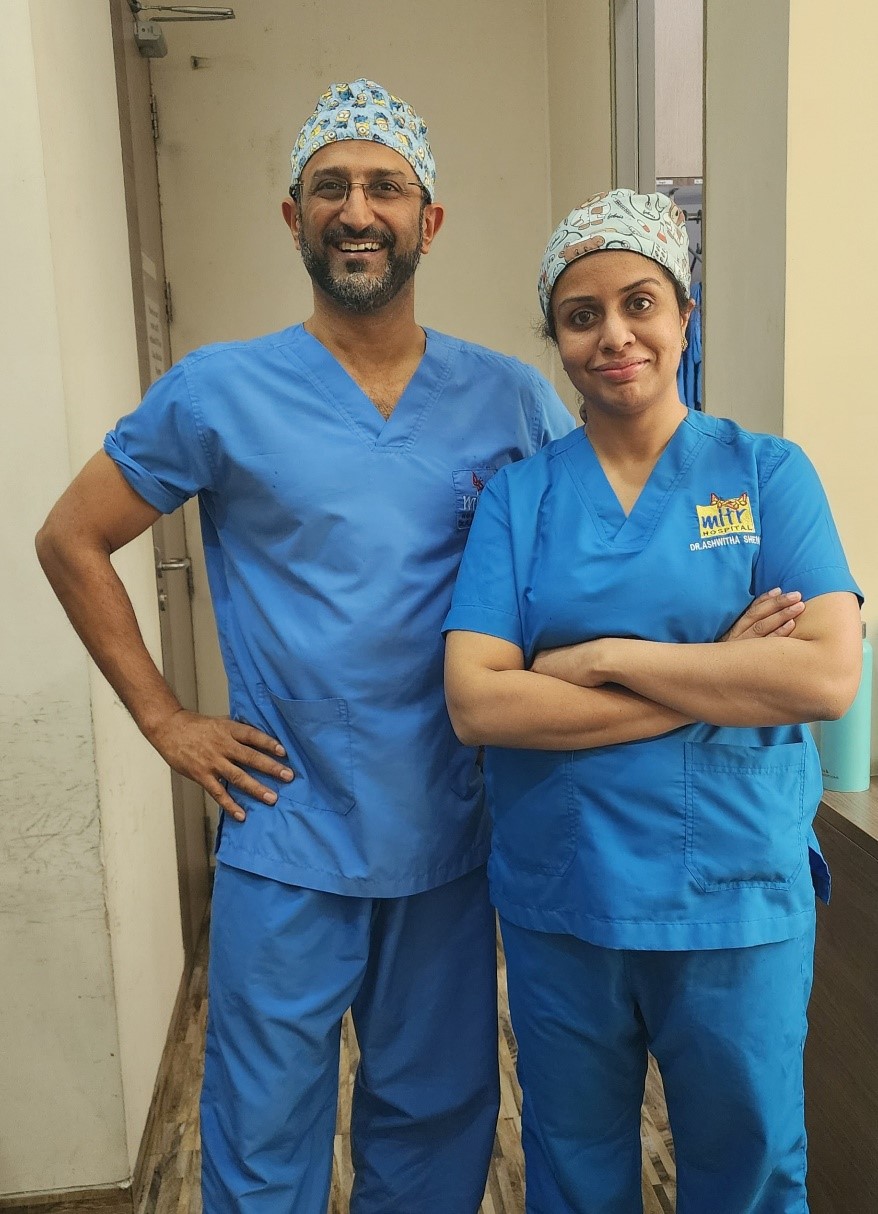Hypospadias and undescended testis (also called cryptorchidism) are both very common clinical problems in young children. While hypospadias occurs in 1/150 boys, undescended testis is even more common. But the treatment for both of them is different.

Undescended testis: What is the usual treatment plan?
When we see a newborn child with undescended testis, we often wait before advising surgery as nearly 60% of the testis which are undescended at birth may come down to a normal scrotal location by 6 months of age. This is even more true if the testis has already come out of the tummy and can be felt by the doctor during the examination in the OPD (palpable undescended testis). For the testis which are higher up in abdomen (intra-abdominal undescended testis) chances of coming down spontaneously are quite less but possible.
Hypospadias: What is the usual treatment?
Hypospadias on the other side, almost always requires surgical correction. And the right age for doing the hypospadias surgery is between 6-18 months of age. We typically advise the hypospadias repair surgery to be scheduled around 9-10 months of age. For hypospadias without chordee, it is usually a single stage surgery while for severe hypospadias or severe chordee, we choose to do a two-stage hypospadias repair procedure.
Both hypospadias and undescended testis occurring together- what does it mean?
When both hypospadias and undescended testis occur together, the diagnosis and treatment is much more complex. The most important thing to be done for these children is to investigate them for disorder of sex development or DSD. DSD is present in upto 15% of children who have both hypospadias and undescended testis. If the hypospadias is severe like scrotal or perineal hypospadias and the child has both sided undescended testis, the chances of a DSD condition go upto 50%.
So, what tests we do when we see a child with both hypospadias and undescended testis?
Any child who has hypospadias and undescended testis, should be investigated for a disorder of sex development. We are worried about conditions like mixed gonadal dysgenesis or true hermaphroditism or even severe variety of congenital adrenal hyperplasia.
Typical tests to rule out such conditions include:
- Ultrasonogram to check for any abnormal organs inside, status of gonads.
- Karyotype – to check for chromosomal abnormalities.
- Hormonal evaluation – Genitogram or cystoscopy: some of these children if they have DSD also may have remnants of vagina or utricular diverticulum which can be seen only on a genitogram or a cystoscopy. MRI scan: may be needed in selected cases to rule out hemiuterus or fallopian tube.
Treatment plan for hypospadias and undescended testis
As outlined above, the first thing to do is to find out if the child has a DSD. If there is DSD, then we involve a pediatric endocrinologist and then consider assigning the gender and surgical plan starts from there.
If there is no DSD, then we prefer to do the hypospadias repair and undescended testis surgery together at around 9-10 months of age. If the undescended testis is palpable, it can be brought down in one stage via a short open surgery. If the testis is intra-abdominal then child will need a laparoscopic single or staged orchiopexy. For hypospadias, if there is no chordee or mild chordee, then we can do the orchiopexy and single stage hypospadias repair together. If hypospadias is very severe or there is severe chordee then we would need to plan for a two-stage hypospadias repair.
Summary: If your child has hypospadias and undescended testis, you must visit a qualified pediatric urologist and a hypospadias specialist. Before any surgery, a full evaluation has to be done as it has repercussions for future sexual function and fertility. But the good thing is that hypospadias and undescended testis repairs can be combined to help child get good result from both in one hospital stay whenever possible.
At Hypospadias Foundation India, we have treated thousands of children with hypospadias and some of them also had a undescended testis. A thorough evaluation and a plan for management for both was given and it worked very well for these children. Dr A.K.Singal and Dr Ashwitha Shenoy are rated as the best hypospadias surgeons in India. If you need an opinion or consult us for your child, please do write to us at hypospadiasfoundationindia@gmail.com or fill up this contact form.
Keywords: undescended testis, cryptorchidism, hypospadias surgery, hypospadias and undescended testis, right age for hypospadias surgery, right age for undescended testis surgery, undescended testis surgery, disorder of sex development, surgery for DSD, hypospadias repair, hypospadias specialist, best hypospadias surgeon in india, hypospadias treatment in india
Fill up contact form: https://www.hypospadiasfoundation.com/contact/
